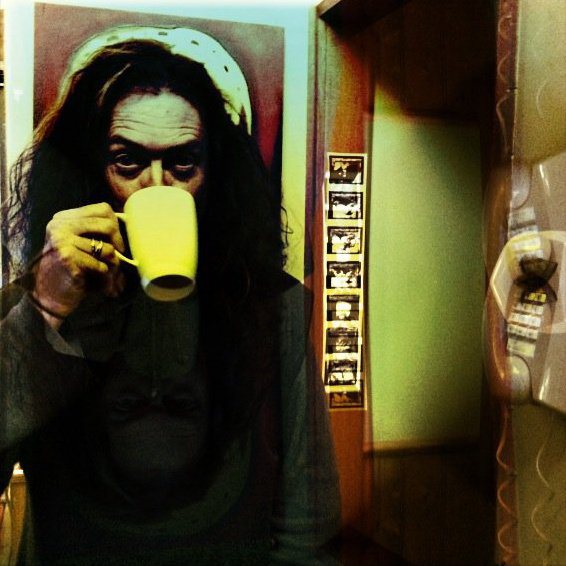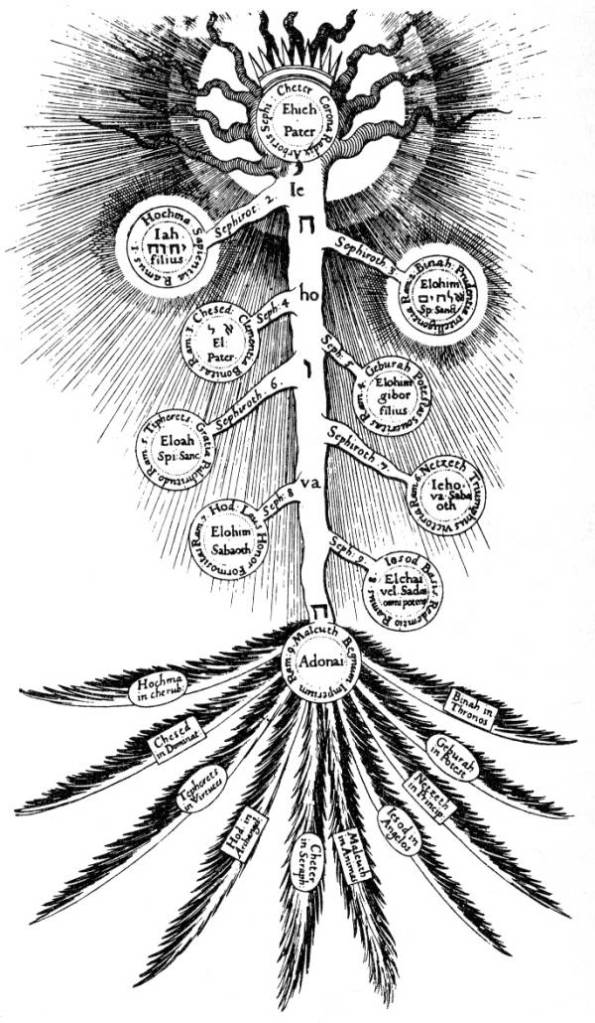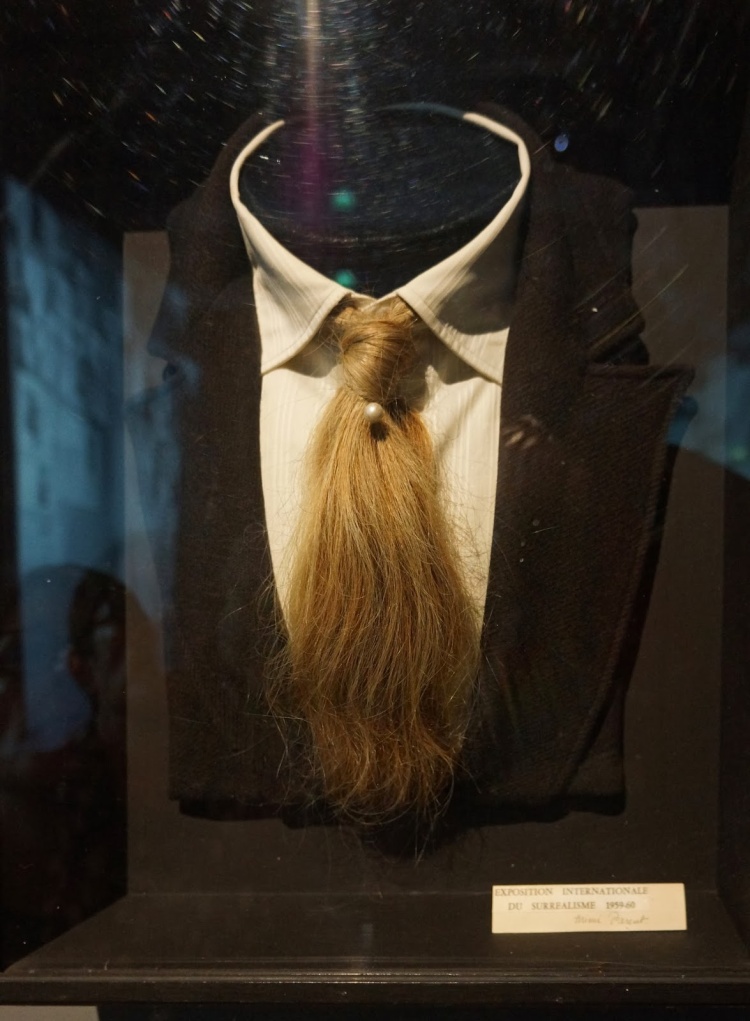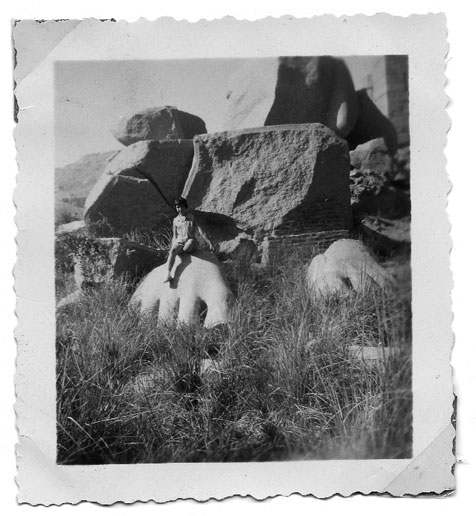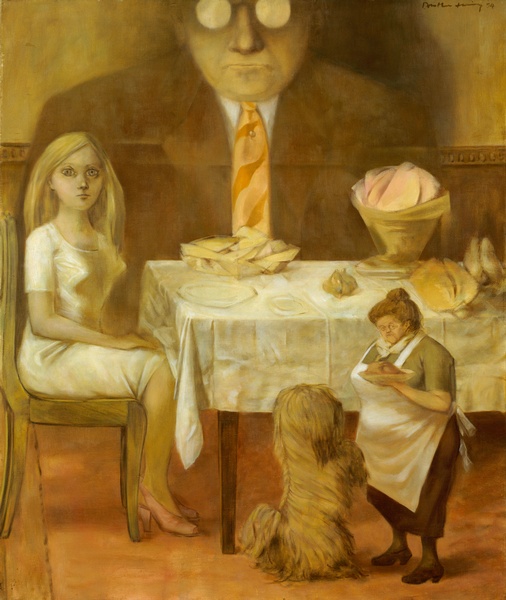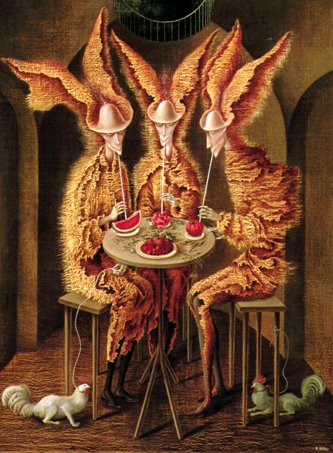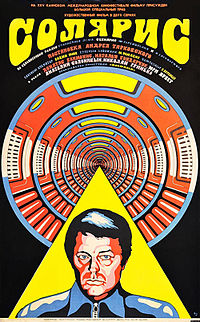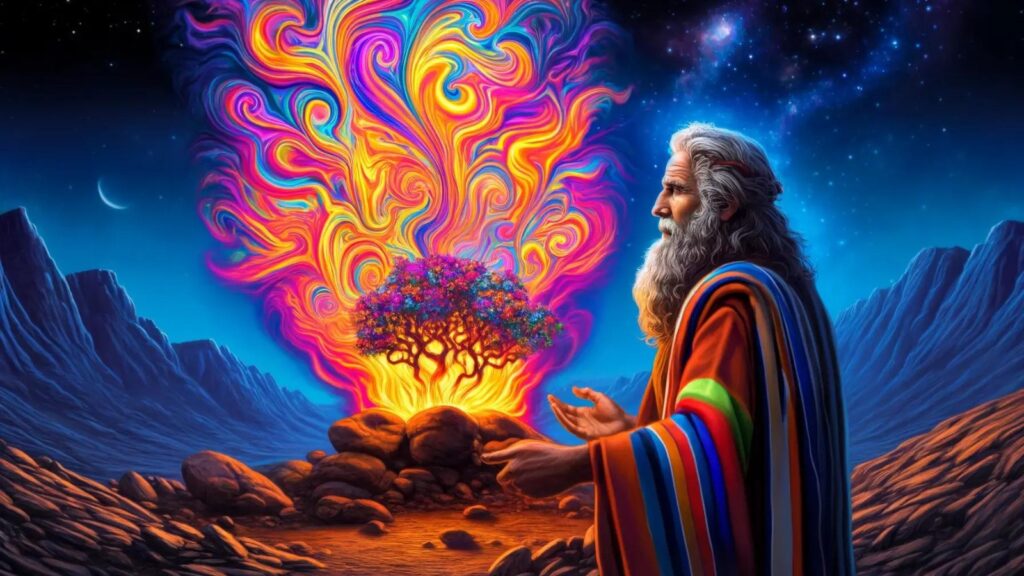The following article originally appeared on Newtopia Magazine.
Watching the new TV series Cosmos I was delighted to see so much attention given to Giordano Bruno. But Hermetic and Platonic traditions that influenced his thought were as usual, ignored. The currently official history of science tells us that while astrology and astronomy, and alchemy and chemistry grew up together in the 17th century with the birth of what would become modern science, astronomy and chemistry soared into the heavens while astrology and alchemy were condemned to lurk in the shadows. That’s not how Professor Leon Marvell sees it.
In his groundbreaking book Transfigured Light: Philosophy, Science and the Hermetic Imaginary Marvell argues that new research in the fields of Chaos and Complexity theory, Artificial Intelligence and Cognitive Science, far from being the radical arrival of previously unknown ideas, in fact have a long history which Marvell calls “Hermetic: the intellectual tradition that developed from the rediscovery of the Corpus Hermeticum and associated texts in the 15th century.” By studying these Hermetic antecedents of modern scientific theory, Marvell argues, we can shed more light on our world and our sciences, and on imagination, which mediates how we experience them.
The Rosicrucians wrote of an Invisible College, winged, with wheels, that could be anywhere and nowhere, a college dedicated to the universal reformation of humanity, making all knowledge available to any sincere and worthy seeker with the patience to learn. The imagination of such a school is as much a precursor of our world wide web as Thomas Harriot’s work on binary numbers.
But Marvell’s book goes much further than similarities in human preoccupation. What Marvell finds in the most recent science is the panpsychism of Neoplatonic and Hermetic thought. The universe is more than the random play of matter. Consciousness is everywhere.
Since Marvell published Transfigured Light in 2007, science has provided more support for his view. Dr. Gagliano, an Australian Research Council research fellow at The University of Western Australia’s Centre for Evolutionary Biology, published in the January 2014 Oecologia solid evidence of memory and learning in plants. In 2013 Professor Lanza, from Wake Forest University School of Medicine in North Carolina, again made headlines with his theory of biocentrism, a quantum physics view of life after death. Lanza describes space and time as “tools of our mind,” i.e., the material world is a form of consciousness, not the other way around.
Marvell shows how the beliefs of Descartes and Hobbes about the human body, that it is a machine, eventually invaded psychology from Freud’s machinic analysis of the unconscious to Dr. Skinner’s view of man as a set of programmable behaviors in a mechanical body.
He also reveals the conceptual connections between Platonic philosophy and the work of modern theorists like A-life scientist Christopher Langton who wrote: “The leap you have to make is to think about machines as being the logic of organization. It’s not the material…if you can capture its logical organization in some other medium you can have the same ‘machine’ because it’s the organization that constitutes the machine, not the stuff its made of.”
Transfigured Light is an intense read. Einstein, Cybernetic theory, Artificial Intelligence and Cyberspace coexist happily with Gurdjieff, Ficino, Plotinus, the Tibetan bardo and Robert Fludd, whom Marvell convincingly argues was not the dodo bird at the birth of modern science many historians have dismissed him as but whose alchemical “psycho-physical practices” were akin to yoga, Marvell finds parallels between Fludd’s writing about self purification and similar Pythagorean ideas and practices. The chapter “The Gnostic Alchemy of Robert Fludd” is a must read for anyone interested in Fludd.
Fludd’s Tree of Life.
Marvell reminds us that: “In his Harmonia Mundi Kepler devoted an entire section to “The Earth as a Living Being” a section doubly significant in that it contains notions that lead directly to his statements describing the ‘dynamic power’ of matter as ‘energy.’ Conventional accounts of scientific conceptualization credit Kepler with replacing the concept of matter as being besouled with that of the notion of physical energy. But as M.H. Nicholson points out, this new notion is intimately connected with Kepler’s belief that the world was a living being. According to Kepler the earth itself was possessed of a soul and this world-soul reflected the anima mundi, the cosmic soul. Imagine for a moment how different our world might be if the scientists who followed Kepler had also regarded our world as living rather than a merely material planet of exploitable things.
Nuances of the philosophy of Leibniz are examined and revitalized. The book contains many illuminating quotes, such as this from Karl Joel’s book about Leibniz: “Soul and body are not two substances that act one upon another, but two functions which pass into one another. The soul is not so fleeting as the wandering consciousness; the body is not as stiff as a corpse. The soul is formed in this transition, in transition the body becomes alive.” Marvell shows revealing similarities between the Kabbala and the philosophy of Leibniz.
Recently in “Take Two Emerald Tablets in the Morning: Surrealism and the Alchemical Transubstantiation of the World” in the anthology Alchemical Traditions: From Antiquity to the Avant Garde (Numen Books, 2013). Marvell wrote about the strong influence of the occult on Surrealism and on Andre Breton, as Marvell says, “the leading western intellectual in the era between the wars.” Miserabilism is the unexamined life, the life of a cog in the wheel, hooked on watching suffering for entertainment, resigned to suffering in real life. For Breton and the Surrealists the cure for suffering is the marvelous, and the marvelous is with us everywhere.
Self-portrait by Meret Oppenheim.
The Surrealists related to alchemists in their effort to turn everyday lead into gold, gold that was always hidden in the lead, as its potential, and true nature. This gold, to the Surrealists, is the marvelous. Or as the Orphics described it over a thousand years earlier the soul in body is entombed and only by waking our true eternal natures can we avoid living lives of blind suffering. For the ancient Greeks the Mysteries were the path to salvation, for the Surrealists that path was art. (Inner Traditions is about to publish what may become the definitive look at the subject: The Esoteric Secrets of Surrealism: Origins, Magic, and Secret Societies by Patrick Lepetit.)
I’m delighted to introduce my readers to a writer with one of the freshest views of the arcane available today.
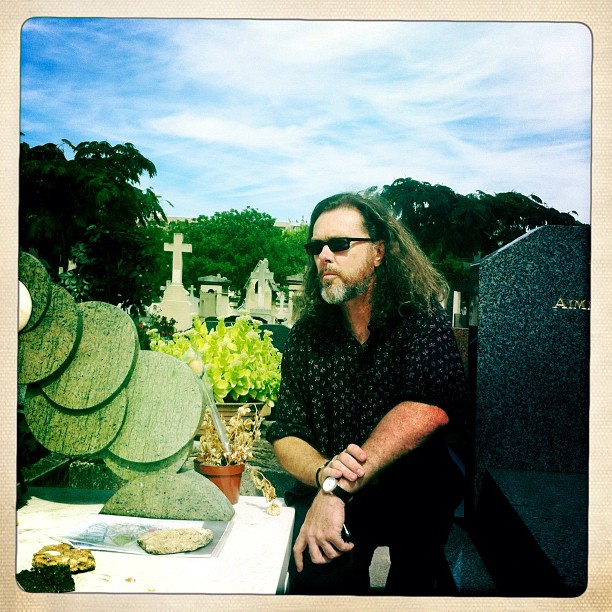
……………………………………………………
Why did you name the book Transfigured Light?
One of the key themes of the book is that a relatively limited number of “ideal objects” (an idea I synthesized from certain conceptions of the great historian of religion Ioan Couliano, 19th century mathematical conceptions of the fourth dimension, and Chaos Theory’s “strange attractors”) have travelled with us throughout history, generating sets of interrelated ideas, all of which constitute a particular “imaginary”. One of the key imaginaries for both Western and Eastern cultures is that of “Light”.
In the book I wanted to show that these “luciform objects” have their origins in the very ancient past, and in particular that the various scientific conceptions of light and the allied notions these conceptions generated—rays and fields of energy—are simply transfigured (transformed) continuations of spiritual ideas supposedly expunged by the so-called “Scientific Revolution” of the 17th century. My task in the book was to reveal the import of these fourth dimensional transfigurations.
And of course, we speak of the “light of understanding” and “illumination”, metaphors which are also part of the imaginary of light which I had set about to uncover. So you could re-translate the title to mean “transformations of understanding” if you really wanted to. There are other resonances to the title that I wanted at least some readers to get: a sly nod towards the Biblical story of the transfiguration of Christ—his transformation into a body of light—which is, as you know, the subject of the second chapter of the book: the historical importance of the various conceptions of the astral body. I like to think that in this manner the title poetically gestures towards the richness of the field I am investigating.
What sort of response did Transfigured Light receive and did different academic disciplines view it differently?
Good question! It is always difficult to know how one’s work is read, by whom, and with what affect. I actually have no idea how many copies were sold around the world, but “sales volume” was not what I was hoping for anyway. I would prefer that the book reach—I mean intellectually reach—a small group of people who would be excited by its ideas than for it to be an academic best-seller (which is a contradiction in terms anyway.)
And the book seems to have had such a destiny: I have been contacted by individuals from around the world who have come across my book, and have been excited by it, and in one case at least, changed by it (a young academic in the United States told me that the book had changed his life—something for which I am not sure I want to be held accountable!) I tried to write the book in such a manner that anyone with an interest in such things could read it without fear that it would be a dry, academic text; in other words I wrote it endeavoring to walk the line between scholarly precision and readability, and evidently this strategy has worked.
The book has had the greatest response from scholars and individuals with an interest in the more esoteric aspects of culture and history. These people tend to have an interest in esotericism in general, and the impact of esoteric thought on the history of ideas in particular. As to individuals on the other side of the books equation—those interested in the physical sciences or the history and philosophy of science—the response has been muted. But I suppose that is to be expected. Both my methodological approach and my critique of the history and philosophy of science are unorthodox, and those presently guarding the gates of the sciences are nothing if not guardians of orthodoxy. There are of course notable exceptions to this rule (I discuss several such individuals and their ideas in my book, as you know), but generally speaking, proselytizers and PR men for the sciences like Richard Dawkins and Daniel Dennett (for example) respond to unorthodox approaches with a determined vehemence. Such individuals believe that Science (with a capital S) is the one-and-only arbiter of what constitutes knowledge. I find such a belief absurd.
Why is it that Hermetic and Neo-Platonist influences were so thoroughly discredited in earlier versions of the history of science when signs of influence and kinship were so obvious?
The history of science is one of wonders and metaphysical daring, but it is also one in which we can very clearly discern a history of violence against alternative ways of imagining the world. This violence is of course on the level of rhetoric, polemic and political maneuver, but it is a history of violence nonetheless. In their efforts to attain legitimacy, the sciences and the “technological imperative” that has accompanied them have systematically either suppressed or ridiculed alternative world-views. This has been a very effective strategy, particularly when it comes to advancing the technological agenda, the results of which are only too clear in an era when many scientists are predicting the extinction of the human race within the next few decades, owing to the inevitably catastrophic effects of global climate change. As to whether this extinction is just the most recent form of scientific apocalypticism we can—frighteningly—only wait and see.
As I have earlier indicated, Science-with-a-capital-S considers itself the pre-eminent gatekeeper of knowledge, and it has a well-financed publicity machine to assure this status, finding particular support among our politicians and their capitalist financiers. One of my intellectual heroes is Paul Feyerabend, whose Against Method is one of the greatest works in the philosophy of science, in my humble opinion. One of the chapters in the book, which most infuriated orthodox philosophers of science and the aforementioned gatekeepers, is the chapter in which he compares the scientific method to witchcraft. For Feyerabend, witchcraft was just as valid an approach to knowledge production as the empirical, scientific method. You can imagine that such an idea caused many historians of science to blow a gasket, and still does.
If we needed further proof of this militant orthodoxy, we just have to look at what happened to Rupert Sheldrake and Graham Hancock at the TED talks recently. Their presentations were ex post facto officially dismissed as “pseudo-science” by the TED scientific committee, when nothing either of them said was unscientific, and in fact Sheldrake’s presentation was the very spirit of scientific enquiry. What the committee could not stomach was Sheldrake’s unorthodox research proposals, proposals which, if scientifically pursued in the manner he advocated, might very well pose a threat to long-held belief systems. And as Kuhn has conclusively shown, historically the sciences are the very last to acknowledge that the reigning paradigms have been in error.
There have been, of course, scholars whose work has recognized the influence of Hermetic and Neo-Platonist ideas during the development of the sciences, scholars such as Thorndike (Western science) and Needham (in terms of the influence of Chinese alchemical ideas on Chinese science) for example, but the idea that, for want of a better term, spiritual thought has had a determinate affect on the history of the sciences has become pretty much anathema nowadays. In the early part of the 20th century this was not the case (when Thorndike, Needham and Yates were writing), but the aforementioned technological imperative married to the scientist PR machine have all but crushed such investigation.
Revenge on Culture by Lee Miller
Do you think it’s possible science will reinvent itself by discovering what was once called “the soul of nature”?
It is certainly possible, but not likely in the near future. I think that for this to happen we would need a “scientific breakthrough” that was so mind-bending, so “out there” that everyone in the scientific community would have to exclaim, “Whoah!” Perhaps something like the scientific confirmation of Sheldrake’s concept of morphogenetic fields, or his notion that human consciousness and vision are not localized to brain activity (as outlined in his recent The Science Delusion), would fit the bill. It is one of those peculiarities of history that it is only a great crisis, such as a crisis in faith in regards to a scientific paradigm, that provokes any real and lasting change in human consciousness.
As Lewis Mumford noted decades ago, we are living under the “sign of Caliban”, a world-view dominated by misshapen political agendas and corporate funding of dreams of mass destruction. This is a historically determined form of deadly miserabilism. But even while enduring this, someone like Jean Gebser believed that he could see the rudiments of a new form of consciousness emerging in the 20thcentury. He came to this conclusion through a close reading of the sciences (particularly the “new physics”) and the impact of Modernism in the arts. I am not so sanguine about this possibility, but if Gebser is even only partly right, then I guess there is the remote possibility that some sort of revival of the “soul of nature” concept will arise in the sciences. After all, the idea of “inter-connectedness” that is central to modern ecology has its ultimate origins in Renaissance notions of the connection between microcosm and macrocosm, and, even earlier, with the Pythagorean notion of cosmic “harmony”. So ecological ideas have been with us since ancient times — it is just that since the late 17th century the intimate connection between human consciousness and the play of nature has been excised from the equation.
Masculin / Féminin by Mimi Parent
Perhaps — and I think there is a very real possibility here — discoveries in the field of consciousness studies will finally open a space for the return of the idea of the soul of nature and, consequently, our erotic relationship (for this was how it was conceived of by both Plato and Ficino) with the anima mundi.
In Transfigured Light you point out that our idea of the virtual and the real, and the question among computer scientists about which is “really” more real, resembles the Platonic division between the transitory world of forms and the timeless world of archetypes. Can you share with our readers some insight into that similarity?
The virtual and the real are slippery terms, and over time they have shifted position in relationship to each other. In the time of the Schoolmen (essentially Medieval Aristotelian) what we would call the “real” today was the virtual, and vice versa. This idea, as you mention, they had inherited from Plato (and only very little Plato had survived in the West before his rediscovery in the Renaissance, so they were lucky to have gleaned even this idea). Like the shifting of chess pieces on a chessboard, Aristotelian thought would subsequently be displaced by Platonic thought in the Renaissance, and this Platonism would be replaced by the revival of one of the keymodus operandi of Aristotle, empirical observation, in the 17th century.
So when we talk about the “virtual and the real” we should remember that we are really talking about variations on Aristotle and Plato — not that contemporary computer scientists would even be aware of this. In computing science the distinction between the virtual and the real is operative in the distinction between software and hardware. The hardware is your PC. The software is, for example, the operating system and any programs you might add to this. As an incarnation of the “universal Turing machine” your PC can (theoretically) run any software uploaded into it. Your PC is an incarnation, if you like, of the archetype of the “universal computing machine” dreamed of by Alan Turing. Therefore all PCs are just instances (“realizations”) of a virtual, archetypal serial von Neumann architecture machine. And every program uploaded into your PC is the “realization” of a virtual archetype.
For computing science the beauty of this distinction is that if a phenomenon can be modeled (in a virtual computer environment) to a high degree of exactitude, then it is possible to “realize” this phenomenon across any number of computing devices. The sine qua non of such modeling is to capture the very essence of a phenomenon in all its complexity. This, of course, is the dream of AI, to create a mind that is indistinguishable from a human mind (as per the Turing test). So far, this dream is only a dream.
The contemporary quest for quantum computation — if it progresses — may well accelerate the realization of this dream, but for that to happen science will have to overcome the thermodynamic limitations of silicon machines and venture into carbon-based computational devices. And that of course is the big stumbling block, both physically and metaphysically. Here I am referring to the concept of ecophagy (consumption of the environment) by “grey goo” quantum nanobots, one of a number of possible apocalyptic scenarios, to which I have already alluded, produced by the contemporary scientific imagination. It is all really quite Faustian, as Oswald Spengler would have characterized it — another connection to the esoteric, or at least, the occult!
Rikki Ducornet on the foot of Ramses, 1953.
Transfigured Light provides numerous examples of modern theorists of computer science and physics whose “breakthroughs” have evidently transformed our view of the world, but in fact, as you show, their ideas would not be out of place in the Hermetica or a Neoplatonist tract. Please share with our readers a favorite example or two.
Well, perhaps your readers should go to Transfigured Light where I have explored several examples in-depth in the book. That is old news! Here I would like to mention something that has engaged my thinking recently — a dovetailing of the recent ideas of a committed computationalist with those of a Platonic biologist. My thinking about this is a kind of mash-up of the controversial ideas of Ray Kurzweil and Rupert Sheldrake. Sheldrake has been on my mind since his disgraceful treatment by the TED scientific committee. I see him as a kind of Hermeticist in biologist’s clothing.
In his How to Create a Mind: The Secret of Human Thought Revealed, Kurzweil proposes that a mind, specifically a human mind, is essentially a pattern recognition machine composed of a hierarchical number of nested pattern recognition circuits that form a sort of recursive fractal. In this respect he is not that far away from similar territory explored by Douglas Hofstadter in his I Am a Strange Loop. I have to admit that I am quite partial to both Hofstadter’s ideas and Kurzweil’s as, even though both of them would probably think of themselves as materialists, there is no reason in principle that their computational ideas could not be applied “across platforms”, as it were. In other words, such “pattern recognition” circuits could be manifested in human systems, computer systems, and perhaps even as morphogenetic fields, which may exist in something like the greater reality where Plato imagined his Eternal Forms as abiding. This is where Sheldrake enters the picture: morphogenetic fields are a kind of transfiguration of the Platonic virtuality that lies behind phenomena.
Of course, like Daniel Dennett’s similarly misleading title for his book Consciousness Explained (Dennett does no such thing), Kurzweil certainly does not deliver on the “secret” to human thought, as one might hope from its subtitle. There is no mention of human emotion, or the human creative drive, or human spirituality (which, as you know, I take to be an obvious empirical reality, not some “delusion” as Dawkins would have it). But if one attempts to align this recent book of Kurzweil’s with that of Sheldrake’s The Science Delusion, then I think a very interesting “space for perturbation” opens up.
In Transfigured Light you discuss the common idea that artificial intelligence may soon become sentient, perhaps even providing a seat for a soul (Vinge’s singularity). What are your current feelings about that theory?
I remain skeptical that such an event, the ‘Technological Singularity’, will ever happen. I am not saying that this is impossible in principle, just that the history of predicting such an event, or even the advent of a true AI, has been a woeful history of failed predictions.
Unlike the world of fiction where SF writers have often been accurate prophets of future events and technologies, history verifies the fact that actual scientists are terrible predictors of the near future. I certainly hope that this trend continues, as many scientific pronouncements about the very near future are quite terrifying.
My favorite vision of the emergence of an AI and the consequent beginnings of the Technological Singularity is a film called Colossus: The Forbin Project, made way back in 1970. The film has a very dark ending (when dark endings were still allowed in Hollywood), and whenever I read of the almost-here Singularity, in my imagination I see the global super-computer Colossus progressively, inexorably enslaving us all.
Family Portrait by Dorothea Tanning.
You describe the effort to map DNA as a binary code determining the fate of every cell of every body “a continuation of the dream of the mechanization of nature.” Can you say a few words about this, and about your view of DNA?
One of the things that consistently seems to be left out of the narrative of “genetic determinism” is the idea of “gene expression”. Gene expression is essential to an understanding of how genes work, but you never find it mentioned by proponents of the idea that our genes are a sort of program or code that determines all aspects of our lives.
The concept of gene expression recognizes that environmental factors strongly influence which genes are “expressed”, and consequently the development of individuals is not determined by an inviolable code hidden within the cells, but by a feedback system between the environment and the developing creature. Surely this is the most important aspect of the entire process, but as I say, one hardly reads any discussion of its importance. Luckily recent discoveries in so-called “neuro-plasticity” also give the lie to genetic determinism.
Alchemists, especially those working with a soror mystica, a female partner in life and lab, were preoccupied with what might be called goddess metaphors. Breton and the Surrealists were also very interested in the sacred feminine. Yet so few women made significant contributions to Surrealism (or alchemy). What held them back, and do you think we may yet see a renaissance of arts and letters led by women?
I’m not sure about your numbers in regards to Surrealism. By my reckoning there were at least as many women Surrealists as their male counterparts. Just off the top of my head, I would mention Dorothea Tanning, Mimi Parent, Rikki Ducornet, Penelope Rosemont, Joyce Mansour, Leonora Carrington, Alejandra Pizarnik, Hilary Booth, Méret Oppenheim, Valentine Penrose, Nelly Kaplan, Lee Miller… as you may guess, I could go on. Perhaps the women were not as full of bluster as their male co-conspirators, but they were certainly as active in making significant contributions to international Surrealism. Indeed, in the continuing life of Surrealism many women are still making provocative contributions to the revealing of surreality in everyday life. If one knows anything about Surrealism at all, I don’t see how it could be otherwise.
Vampires by Remedios Varo.
Remedios Varo, the Spanish-Mexican surrealist painter and anarchist certainly had an interest in alchemy, as did Leonora Carrington. I certainly would not call their contributions to the arts and our culture insignificant! And if Zosimos of Panopolis was correct, then Maria Prophetissima (Mary the Jewess) was the very first Western alchemist. So the sorors mystica have always been traveling with the entwined paths of Surrealism and alchemy…
Why is it that the influence of the occult on Surrealism has been so understated until now?
I think part of the reason is that many of the commentators on Surrealism (including those who would seek to bury it by treating it as a historically delimited phenomenon) have sought to diminish the extent to which the occult tradition had an influence on its key thinkers, in favor of readings that emphasize its political activities and its association with the European avant-garde. Both these readings are perfectly valid; it is just that they do not constitute the whole picture. Anybody familiar with the aims and methods of Surrealism would have to ask, how could Surrealism not be influenced by the occult tradition?
I think also that with the comparatively recent rise and begrudging acceptance of studies in esotericism as being a legitimate area of academic research, scholars are now more willing to step into what was once forbidden territory and, in regards to Surrealism, see what was always there to see. Most scholars interested in Surrealism however come from art history or literature backgrounds, and so they are not necessarily equipped to recognize the formative influence of the occult tradition on Surrealism, and if they do, they are not able to interpret what they find. There are notable exceptions to this, naturally.
André Breton of course always maintained his indebtedness to the European occult tradition. In the past, scholars were just too scared to go there with him!
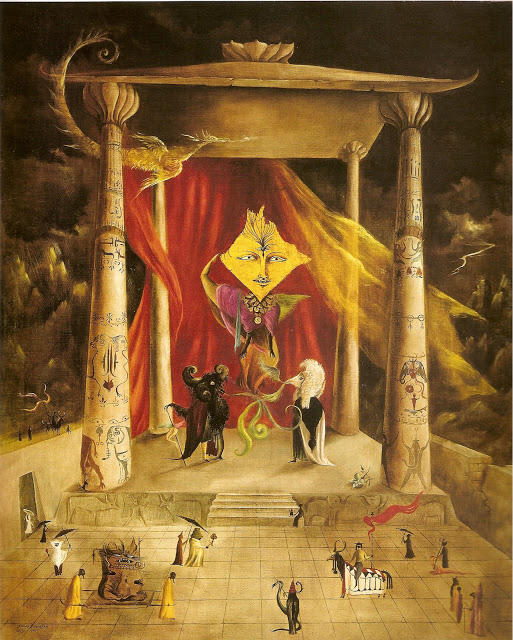
You’re an associate professor of Film and Digital Media at Deakin University, Melbourne, what do you think about this time in the evolution of film? Do you think the future of film will be in the hands of visionaries with digital cameras, or will corporate media complete their stranglehold on distribution by televisionizing the Internet?
Actually I think both scenarios are likely. Of course corporate media will try and limit and control the distribution possibilities of the visionaries, but one thing it cannot do is control the imaginations of young filmmakers, and it cannot stop filmmakers (young and old) from making films if that is what they really want to do. In the wonderful short documentary film, Werner Herzog Eats his Shoe by the great American filmmaker Les Blank, Herzog says something like that if you really, really want to make a film, then you will have no qualms about begging, borrowing or stealing the equipment you need to get it done. That was over thirty years ago. We all know how much easier it is to make a film with affordable digital equipment now; you don’t have to steal anything! It does not even have to have high production values to have the required affect — just look at YouTube and Vimeo or the number of people who only listen to their music in the form of mp3s. All three are crap forms of media (in terms of picture or sound quality), but they serve their function very well as media — that is, as a medium of communication.
We are living in a time in which low-fi is absolutely acceptable, and this means that even if you just have a cell-phone to make a movie, you can do it. It is a kind of rock-and-roll sensibility, a garage-band aesthetic that says if you have something to say, just go ahead and say it. It doesn’t have to look pretty. Personally I am quite partial to such a sensibility, and I don’t think it jibes with my simultaneous love for the grand filmmakers of the past such as Tarkovsky. I think we should all look towards an ecology of creative expression, in which differing forms all contribute to the scintillating complexity.
What are you working on these days?
I have been quite busy writing for various publications recently. I co-wrote a chapter for the MIT Press book Re: Live: Histories of Media Arts, Science & Technology on the concept of the “Lifebox” with my friend Rudy Rucker that came out late last year. I will have two chapters in a collection devoted to occult cinema, edited by my friend and colleague Jack Sargeant, and published by Fulgur Press in the UK, coming out later this year. I have an essay in an upcoming volume of the Leonardo Electronic Almanac, Transdisciplinary Image. The essay is titled, Headless and Unborn, or the Baphomet Restored: Interfering with Bataille and Masson’s Image of the Acephale. It is an “esoteric” reading of Masson’s famous drawing that ropes in Levi’s image of the Baphomet, Roger Caillois’ essay on the preying mantis and the Knights Templar. Truly a transdisciplinary essay!
I am also editing a book with a colleague provisionally entitled, Dangerous Science Fiction, devoted to the idea that SF can (and should) be dangerous. I will have a chapter in it that ties together Tarkovsky’s Solaris with Hitchcock’s Vertigo. That will come out next year.
And finally, I am trying to finish writing a book called Daimonic Cinema, which is an attempt to bring cinema studies within the purview of studies in esotericism. I think it will be an interesting contribution in an area that has traditionally been the concern of religious studies departments only.
What do you read to unwind?
I would like to say that I read to unwind, but unfortunately as an academic in the modern university, if I read anything other than what might be considered research material I feel guilty, and guilt isn’t something that is conducive to relaxation. I have a large pile of novels on my bedside table, but every time I pick one up to read at night, a twinge of guilt inevitably arises. Such is the insidious poison of contemporary academia, and its unforeseen side-affect.
Having said that, I have been re-reading some Science Fiction classics, and catching up on recent work that I have missed, like M. John Harrison’s conclusion to his brilliant Kefahuchi Tract trilogy, Empty Space. I have also been re-reading the novels of Peter Straub and exploring some of the newer generation of horror writers such as Gary Braunbeck and Sarah Langan. I like anything (such as the work of these writers) that has what might be called a “metaphysical frisson.” I think that a lot of contemporary horror writing is about the terrors of being “thrown” into the world, as Heidegger called it, of being an embodied soul trapped in a world we never made (to quote Howard the Duck, sort of). And I am presently reading Andrew Crumey’s latest work, The Secret Knowledge. His Mobius Dick is one of my favorite novels.
As a consequence, my academic guilt quotient is quite high at the moment.
Quite apart from reading, luckily I have another outlet from the pressures of academia. I have been a student of Chinese martial arts since the mid-1980s when I was living in China. I study and practice the so-called internal (neijia) martial arts of Xingyiquan, Baguazhang and Taijiquan, for all of which I have had (and continue to have) wonderful teachers. As one of the keys for the practice of such arts is what in Chinese is called song, or relaxation, I am guarantied a practice session without stress if I am doing things right.
Thank you for your questions Ronnie. It has been a pleasure responding to your queries.
